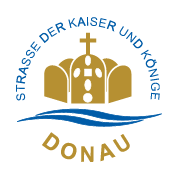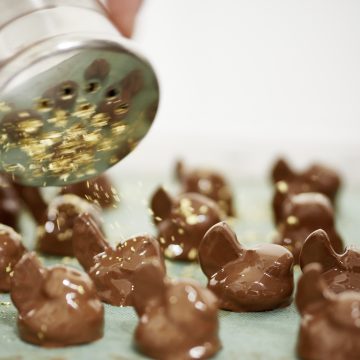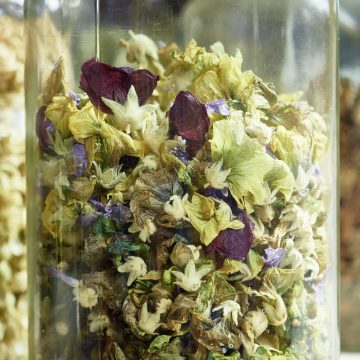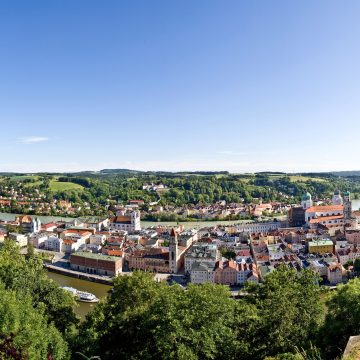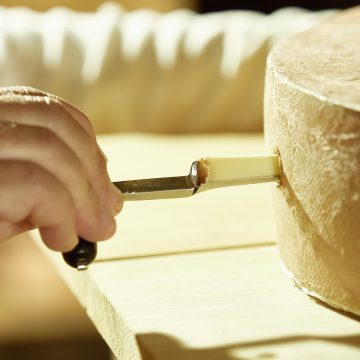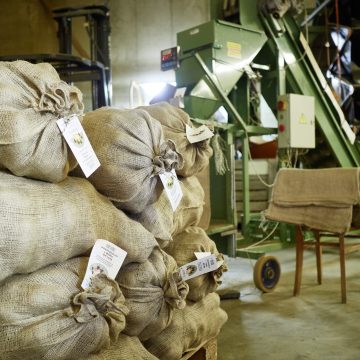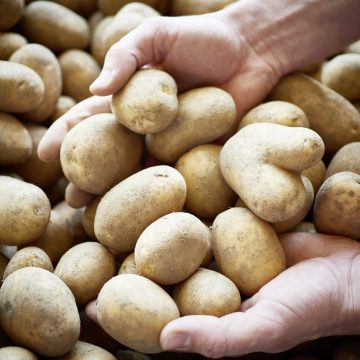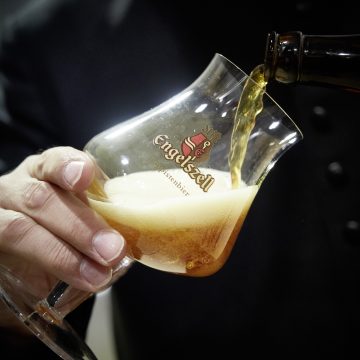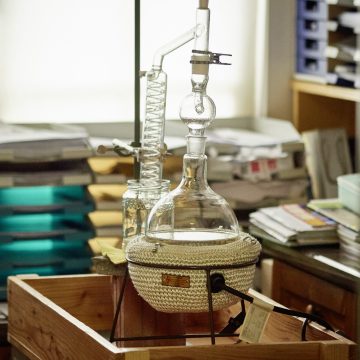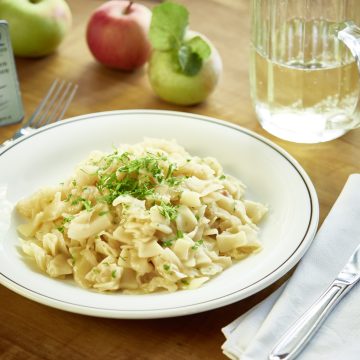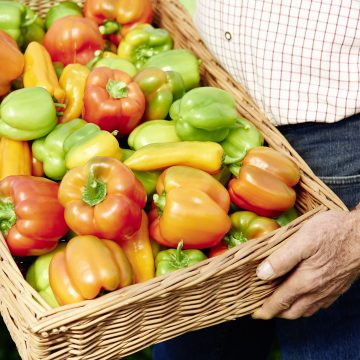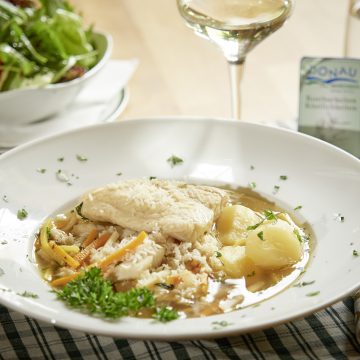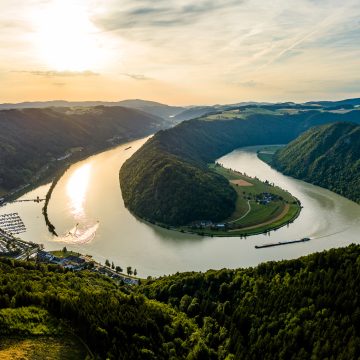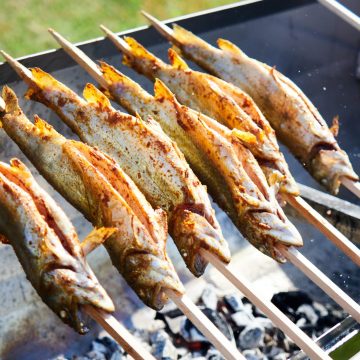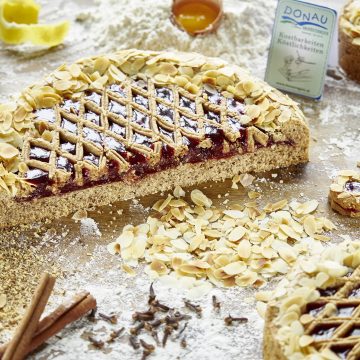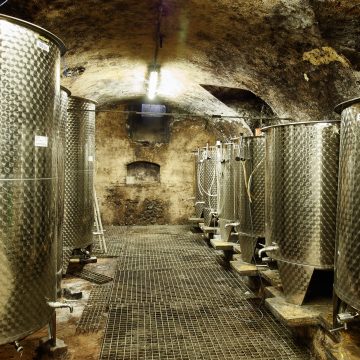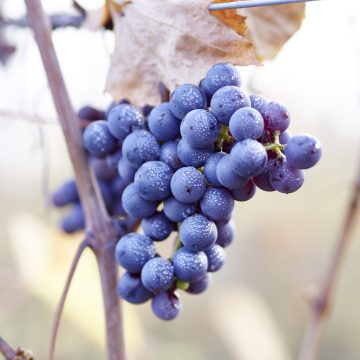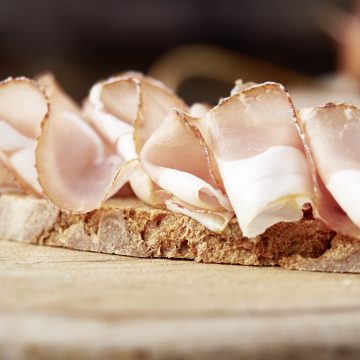Danube Culinary
A culinary foray along the Danube from Passau to Grein
The Passau booby, a landmark that can also be tasted as a delicious gingerbread - tells his story: "From the Passau Cathedral I fell down, breaking my beautiful body. Am nevertheless kreuzwohlauf and lively, only in the head still somewhat weakly." The stone head from Passau probably once fell from a cathedral, so it's no wonder that he's still a bit confused and considered a dolt. But anyone who tastes the sweet delicacy in Passau is unlikely to care much about its soul: pure enjoyment is the order of the day in Passau when you take a bite out of the "sweet booby".
And Passau is only the beginning of our little culinary journey east to the Upper Austrian Strudengau. Because along the Danube you will always and again encounter culinary delicacies that are quite typical and authentic: For the region, for the landscape, for the people along the Danube. You should not miss this, because: Food and drink keep body and soul together. Also when traveling along the Danube.
Have you ever been to Theklasien, no? The small country is still missing on your personal to-do travel list? Not for long, the next time you should be on the road in the upper Danube valley: Here lies Theklasien namely, a small oasis of near-natural agriculture with permaculture - invented, named and managed by Thekla Raffezeder, her sign expert for wild herbs, medicinal plants and all kinds of fruits, and plants that she further processes. Sheep and goats also live here and all products are processed by hand and brought to the man - keyword "Naturwunda". The latter is the famous herbal tea of Thekla.
The truffle from the Sauwald, which in turn is a very special cheese from Somann cheese specialties in the Innviertel Esternberg and it is created in an organic farm with a small herd of goats. This Sauwald has a rather harsh climate, but with the quite mineral-rich soil it is also an excellent soil for the Sauwald Erdäpfel, which are said to have a very special taste. That's why it was by no means a liquor idea to distill vodka from these potatoes. The "Sauwald Vodka" has meanwhile become well known and established - popular also because of its "slanted bottle". Why is the bottle slanted? The slope where the potatoes grow - the Sauwald - is, after all. That makes sense, doesn't it?
The farmers around Eferding are taking care of no less than 50 varieties of potatoes from the region, some of which are old and have fallen into oblivion, and they are cultivating the "Eferdinger Trüffel" variety again. Cheese truffles and potato truffles - so many regional specialties - you need time to taste and try them all.
In the Upper Danube Valley in Neustift im Mühlkreis, on the other hand, you will find the chocolate store, virtually for local supply when there is a great need for sweet delicacies. There, where the Trappists of Engelhartszell Abbey also live and cause a culinary furor with their fine liqueurs, a congenial culinary partner has been found: The egg liqueur of the monastery brothers was the first praline filling: today, therefore, you can also buy sweet products from the chocolate store at Engelhartszell Abbey. But with the Trappists, home-brewed beer is also not far away:
The only Trappist beer in Austria must meet quite strict rules and requirements: For example, that it may only be brewed in a Trappist monastery itself or in the immediate vicinity by the monks themselves or their supervision. In this case, the result is a strong beer with a high alcohol content - if nothing else, nothing else. The three varieties are called "Gregorius"; "Nivard" and "Benno" and commemorate three confreres of the Engelszell monks.
And while we're on the subject of liquid enjoyment, here in Upper Austria the national drink is not far away either: must, which has long since ceased to be a simple thirst-quencher for farmers, but has already made it into the quality league of a top-quality drink: there are even must sommeliers here already. One of them is Erich Aumüller from the Donautaler Mostkellerei in Obermühl on the Danube. His "Donauperle" is a pear frizzante that constantly brings home awards. A small tip: "Mostkrautfleckerln" can be sampled from the chef at the Landgasthaus Lehnerwirt in Alkoven.
Also the so-called ship masters who used to do their work here on the Danube - today one would say Danube captain - often ran their own restaurants: The local catfish of the Danube - also called "Waller" - was often on the daily menu and still is today. In Wesenufer, at the Schiffmeister Inn , it is cooked slowly in beef broth and steamed. A speciality from the Danube region in Upper Austria.
Of course, a good beef soup also needs fresh root vegetables: The Eferding Basin is Upper Austria's vegetable garden - the Haiß family's farm store in Hartkirchen is devoted entirely to vegetable cultivation, with over 50 varieties under cultivation. The Haiß family believes that the "common" onion is usually not given the honor it deserves, which is why they have focused on old, regionally rooted varieties of onion. Ever heard of the "Hartkirchner Landzwiebel"? If not, then quickly stop by the restaurateurs of this region, because this super vegetable is not found in the supermarket, but only in the regional processing of the restaurants.
One of the most beautiful hotspots in the Upper Austrian Danube region is probably the picturesque Donauschlinge, where the Romans once established a naval base. Today, hikers, cyclists and excursionists also like to stop here to feast on the freshly caught dishes of the famous Hotel Donauschlinge. In a place where people have been working for more than 2000 years, the Danube trout probably tastes particularly good.
The small relative, the Steckerlfisch, eats particularly well in cozy surroundings such as at the completely unpretentious but culinary highly competent campsite Au an der Donau, where the char from the Mühlviertel becomes a hearty Steckerlfisch and is worth a stop while biking or hiking or in between camping. The Standl is in fact much more than just a stand, but a popular culinary meeting place for all occasions.
Arrived in the Upper Austrian capital Linz you should first treat yourself to a real Linzer Torte - how it is made, the one and only?
It has been around for over 300 years and only with currant jam is it the real thing! You can taste it on almost every corner in Linz, but at Leo Jindrak 's pastry shop it tastes especially good. But let's go on from Linz to the oldest city in Austria, Enns (or is Vienna the oldest - there is a heated debate about that right now), to taste the "Redhotsecco" on the spot. At the Maleninsky farm there are many such unusual compositions and "delicacies" such as fruit spreads and honey in their own farm store. The Redhotsecco functions as an aperitif, just like the Marillosecco, Mosecco or Hollersecco, for example. How that already sounds quaffable to my ears!
Almost as good as the melodious "Rösler" from the Danube Valley, which in turn is a dark red wine cultivated at Weinbau Gmeiner in Perg and has won several awards, including Falstaff. Could be enjoyed with a sweet dessert such as "Batzlguglhupf", the recipe for which the Schörgi family from Grein on the Danube found in the attic: It dates back to 1892 and the Guglhupf is now the highlight of the Schörgi confectionery.
A rather hearty stop is then worthwhile at the Speck-Alm in Bad Kreuzen: As the appealing name suggests, it's all about spicy bacon from free-range pigs. Which brings us back to the must, which tastes great with it.
To the must and wine just everything pushes here in the Danube region! How will it taste for us in the Wachau!
- Culinary Pearls on the Upper Austrian Danube
- Slow Food Upper Austria
- Danube Upper Austria
- Pleasure Land Upper Austria
- Pleasure regions Upper Austria
Regional delicacies between Passau and Grein - A selection
- Chocolates chocolate Simon, Passau
- Somann cheese specialties, Esternberg in the Innviertel region of Austria
- Chocolate store, Neustift
- Trappist beer of the monastery Engelszell, Engelhartszell
- Sauwald Vodka, Martin Paminger, St. Agidi
- Permaculture Theklasien, Haibach ob der Donau
- Donautaler Mostkellerei, Obermühl on the Danube
- GemüseLust farm store Haiß, Hartkirchen
- Eferding producer, Eferding
- Confectionery Jindrak, Linz
- Maleninsky farm, Enns
- Winery Gmeiner, Perg
- Confectionery Schörgi, Grein
Restaurant Schmankerln - A selection
- To the shipmaster, Wesenufer
- Wesenufer Hotel, Waldkirchen am Wesen
- Hotel Donauschlinge, Haibach/Danube
- Restaurant Hoamat, Haibach/Danube
- Country inn Lehnerwirt, Alkoven
- DonAu-Standl at the camping site, Au an der Donau
Photo credits (c):Danube Region Upper Austria
